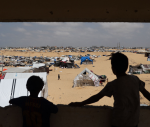You are here
Banking sector ‘sound, healthy and stable’ — CBJ
By JT - Jul 29,2018 - Last updated at Jul 29,2018
AMMAN — Banks in Jordan have sound and healthy financial indicators in terms of a high capital-adequacy ratio, low non-performing debt, high profitability and comfortable levels of liquidity, the Central Bank of Jordan (CBJ) said Saturday.
In its “Financial Stability Report for 2017”, which revealed the comparison of the banking sector stability index in particular with other countries that developed a similar one, CBJ said that Jordan enjoys a “healthy, sound, and stable” banking sector to a high degree as the Kingdom ranked third among 19 European countries.
The benchmarking was made with the EU countries because there was only one Arab country that developed such an index, according to the report, cited by the Jordan News Agency, Petra.
The CBJ’s report focuses on developments in the banking and financial industry in Jordan and efforts to improve it, in addition to evaluating the sector’s performance and its ability to endure shocks and risks.
Financial stability is meant to enhance the capacity of banks and other financial institutions to withstand risks and to limit any structural imbalances, as pertinent to the amended law of the CBJ for the year 2016, which expanded the objectives of the regulator to include explicitly maintaining financial stability and monetary stability.
The stress testing results, which are used to measure the ability of banks to withstand shocks, showed that the local banking sector is generally capable of absorbing high shocks and risks, even under severe assumptions and scenarios of political and economic turbulence in neighbouring countries and their impact on financial stability in the Kingdom.
The facilities granted by banks to individuals in 2017 grew by 8.2 per cent to JD9.5 billion, representing 38 per cent of the total banks’ facilities, the report said, though at a pace slower compared with the credit facilities granted by banks during 2015 and 2016, which grew by 11.2 and 13 per cent, respectively.
Facilities granted by banks to individuals for household and residential lending reached JD4.2 billion, personal loans stood at JD3.1billion, car loans at JD1.2 billion, consumer lending at JD500 million and JD200 million for credit cards.
The lending-to-income ratio for individuals borrowing from banks went down to 67.4 per cent in 2017, compared with 69.3 per cent in 2016, which is a “positive indicator” that shows a decrease in debt risks on individuals themselves as well as on the banking sector.
The report’s findings indicated a rise of 11 per cent in banks’ credit facilities provided to large companies in 2017, reaching JD9.6 billion and constituting 38.1 per cent of the total banks’ facilities.
Facilities provided to small and medium enterprises (SMEs) also rose by 5.5 per cent, reaching JD2.1 billion and constituting 8 per cent of total credit facilities, the report showed, pointing out that efforts and initiatives taken by the CBJ in providing concessional financing to this sector contributed to this rise.
The report said that the CBJ has adopted several procedures to protect bank clients and financial institutions, the most important of which were regulations stipulating that the way banks deal with clients is subject to the CBJ’s oversight, while a special unit was set up for the protection of financial consumers.
The study also said that 95 of companies can cope with their debt rates in case of financial shocks related to raising interest rates or lower profitability. Real estate companies are the most affected by such shocks, it said.
Real estate facilities or facilities with real estate collaterals comprised 32.4 per cent of the total facilities extended by banks by the end of 2017, compared with 33.3 and 35.6 per cent in 2016 and 2015, respectively, which shows lower levels for banks’ real estate risks, according to the CBJ report.
Credit facilities extended for the real estate sector for housing and commercial purposes totalled JD5.29 billion in 2017, accounting for 21.6 per cent of total facilities, and compared with JD4.96 billion in 2016 with a growth rate of 6.5 per cent.
The report said that the real estate market in 2017 experienced the repercussions of slower economic activity in Jordan and the political and economic developments in the region in a clearer way than in previous years. In 2017, the volume of investments in the property sector dropped by 14.1 per cent and the real estate price index went down by 0.9 per cent.
The report said that such a drop in the price index is still mild and is not worrisome so far.
Related Articles
AMMAN — Banks in Jordan have sound and healthy financial indicators with a capital-adequacy ratio of 17 per cent, the Central Bank of Jordan
AMMAN — Banks’ loans granted to individuals for housing purposes in 2017 totalled JD4.17 billion, compared with JD3.92 billion in 2016, mark
AMMAN — Individuals' debt-to-income ratio (DIT) reached around 63 per cent by the end of 2014, according to the Central Bank of Jordan.In it















